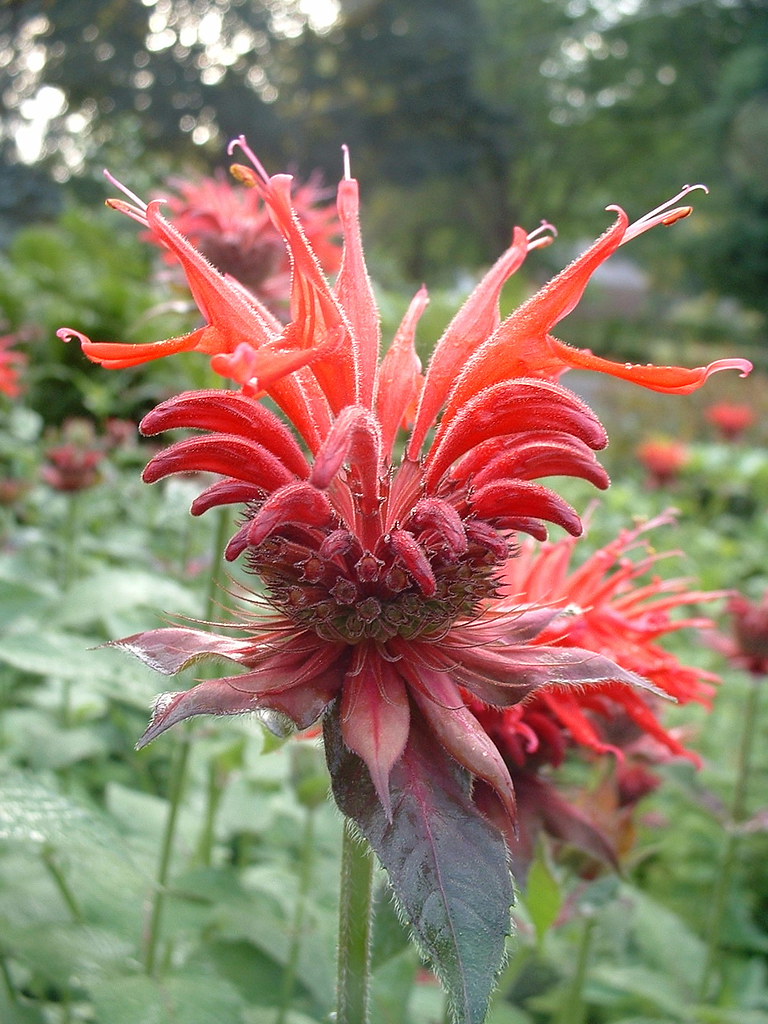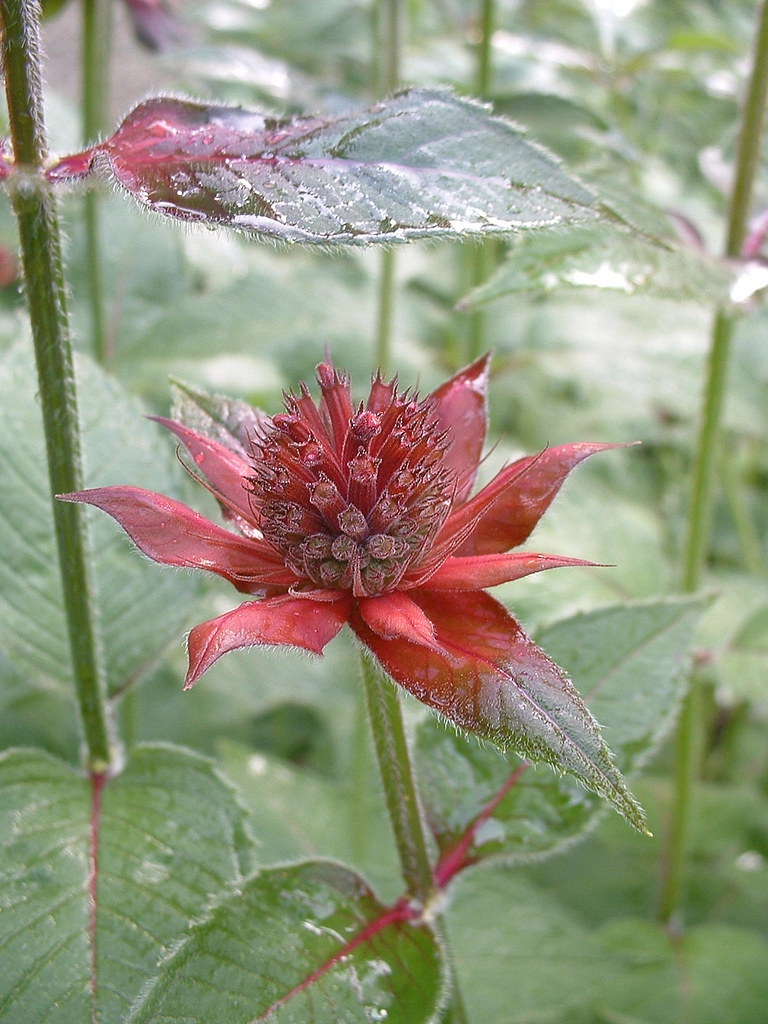 Bee Balm (Monarda didyma) is perhaps one of our most popular garden stalwarts, and never fails to attract plenty of attention when it bursts into its full scarlet glory around this time every year. And it's not just the people who go for its brilliant flowers ... it's also a veritable hummingbird magnet, and if you have them in your neighborhood, you can expect many visits from them as long as it remains in bloom. You'll also see bees flocking to it, as well as butterflies, as it seems to constitute a valued food source for them.
Bee Balm (Monarda didyma) is perhaps one of our most popular garden stalwarts, and never fails to attract plenty of attention when it bursts into its full scarlet glory around this time every year. And it's not just the people who go for its brilliant flowers ... it's also a veritable hummingbird magnet, and if you have them in your neighborhood, you can expect many visits from them as long as it remains in bloom. You'll also see bees flocking to it, as well as butterflies, as it seems to constitute a valued food source for them.One of my earliest posts here on Urban Oasis was devoted to this showy garden veteran, so I'll refer you there for more detailed growing notes. Suffice to say that once established, it's a tough, reliable species that makes itself quite at home in the garden, spreading gradually outward to form a larger stand of plants. Over time you'll want to divide it, not only to keep it confined a bit, but it also appreciates a bit of thinning out periodically to encourage more robust re-growth. We tend to give a fair amount away but have decided that this year, what divisions we make we are going to establish in other spots elsewhere in the garden, because you can never (to our minds) have too much Bee Balm, especially when it blazes into bloom in mid-June. When ours is in full sway, you can often see it from the opposite end of the block, it's that bright!

Notes on these photos courtesy of Fernymoss:
The first shot shows a partial view of the main stand of plants, though only about five or six were in bloom when these were taken on June 16, 2007. Since then quite a bit more have opened up and are spreading the red around the area.
The second close up is perhaps our favorite of this group of photos ... we think the top blooms look like baby birds demanding food ....

And just for a bit of contrast, the third shot shows what the bud looks like before it opens fully ... all tightly packed and ready to unfurl in the summer sun. Also note how the red has bled over into the foliage and veins, something we haven't really noticed in past years ... an interesting variation we'll be watching for in successive blooms.









4 comments:
Hi IVG.
Beautiful flowers. The very bottom one is impressive though. It looks like it was dipped in silver.
Great photos.
Morning IVG, FM.
These are definitely impressive IVG! The colour is amazing. And I see what you mean about the red in the leaves. Have you seen many hummingbirds yet? They've been scarce in my backyard so far this summer.
Heh, my bee balm plant just sits around and hasn't bloomed yet... after a couple of years. Makes me wonder if the thing was mis-labelled.
Hi there FM, Olivia and Far! We just love this stuff (in case you hadn't noticed) and look forward to it every year. I'm thinking that it's a bit stunted this year (due to that brutal cold back in April, when it had already come up), but it's right on time, bloom wise. When I went back to my original post I was surprised to find that it was blooming on exactly the same date last year! Further testimony to its tenaciousness as a member of the mint family!
Far, I'm puzzled as to why yours hasn't bloomed in two years, so perhaps it was mislabeled? Smell the leaves and if they have a distinct citrusy aroma that would be a sure sign it's really Monarda. Maybe it's not getting enough sun, but even that shouldn't discourage it from putting up at least a few tentative blooms... Not sure what to tell you there. Sorry about that!
Post a Comment